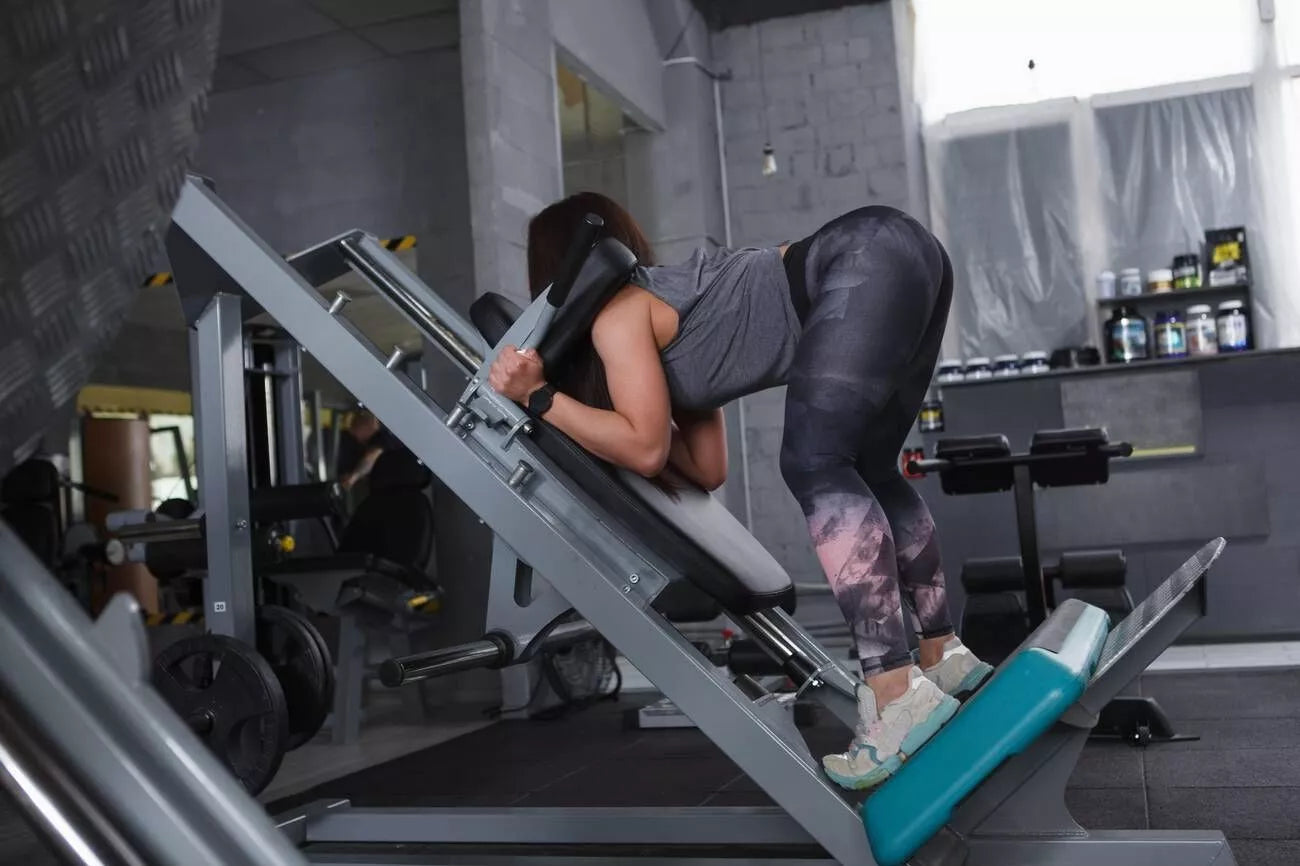7 Best Hack Squat Alternatives You Should Try


When it comes to building a strong lower body, the hack squat is a popular go-to exercise. It hits your quads, glutes, hamstrings, and calves while helping you build serious strength and muscle. But not every gym has a hack squat machine, and some lifters simply prefer other options. The good news? You don’t need to skip leg day. There are plenty of effective alternatives that deliver similar benefits.
Understanding the Hack Squat
Before diving into alternatives, it helps to know why the hack squat is so effective. Traditionally, the hack squat places your back against a platform while you press upward through a barbell or sled. This setup provides a stable path of motion that really challenges your quads while still engaging the hamstrings and glutes. However, because of the fixed angle, it can also put stress on the knees if your form isn’t spot-on—which is why safety and proper technique are so important.
Best Hack Squat Alternatives
Barbell Squat
Often called the king of leg exercises, the barbell squat is one of the most versatile replacements for the hack squat. Position the barbell across your upper back, plant your feet shoulder-width apart, and lower into a squat with your core braced. This move works your quads, glutes, and hamstrings all at once, while also building total-body strength.
You can perform squats inside a squat rack or power rack for added safety. Be sure to adjust the J-cups to the right height and use spotter arms if lifting heavy. Variations like front squats or Bulgarian split squats let you shift emphasis and keep workouts fresh.
Leg Press
The leg press is a gym favorite and an excellent hack squat alternative. By pressing a weighted platform with your feet, you work the same key lower body muscles while reducing some of the stress on your knees and back. Adjust foot placement to emphasize different areas—higher for glutes and hamstrings, lower for quads.
Goblet Squat
If you’re training at home, the goblet squat is a simple but effective option. All you need is a dumbbell or kettlebell. Hold the weight close to your chest, squat down, and drive back up. This position naturally encourages good form and keeps your torso upright, making it easier on your back while still challenging your legs and core.
Belt Squat
The belt squat is a unique exercise that takes the load off your shoulders and places it around your hips using a special belt or attachment. This lets you squat heavy without straining your spine or shoulders. It’s excellent for targeting the quads while keeping your upper body fresh for other lifts.
Landmine Squat
With a landmine attachment and a barbell, the landmine squat becomes a joint-friendly hack squat alternative. You’ll hold the free end of the barbell and squat down, which helps reduce stress on your back while still hammering your legs. Variations like the sumo landmine squat are great for mixing up your training.
Sissy Squat
The sissy squat isolates the quads like few other moves. By leaning back as you squat, you’ll feel a deep burn in the front of your thighs. This one requires balance and control, so start with bodyweight and progress carefully. It’s also a good idea to use knee sleeves for extra support and comfort.
Split Squat
Also known as the stationary lunge, the split squat trains each leg independently—perfect for fixing strength imbalances. Step one foot forward, keep the other back, and lower into a controlled squat. Bulgarian split squats, performed with your back foot elevated on a weight bench, are especially challenging and effective.
How to Choose the Right Alternative
So which exercise should you pick? That depends on your goals, equipment, and comfort level. If you’ve got access to a squat rack and Olympic weight plates, barbell squats are unbeatable. Training at home with limited gear? Goblet squats or split squats with dumbbells work wonders. Want to spare your back while still squatting heavy? The belt squat or landmine squat are smart picks.
Form and Technique Matter
No matter which alternative you choose, form is everything. Keep your spine neutral, brace your core, and make sure your knees track over your toes. Small adjustments like stance width can shift muscle activation—wider hits the inner thighs, narrower emphasizes the quads. Supportive gear like lifting belts or knee sleeves can give you extra stability, especially when pushing heavier weights. And remember, proper setup—like storing weights safely on a dumbbell rack—helps you stay focused on your training instead of worrying about clutter or accidents.
Conclusion
The hack squat is an excellent leg builder, but it’s far from your only option. With alternatives like the barbell squat, leg press, goblet squat, belt squat, landmine squat, sissy squat, and split squat, you can still grow strong, balanced legs whether you’re at a commercial gym or building your own home setup. Focus on proper form, gradually increase the weight, and use the right equipment—like barbells, squat racks, and functional trainers—to keep progressing safely and effectively.


